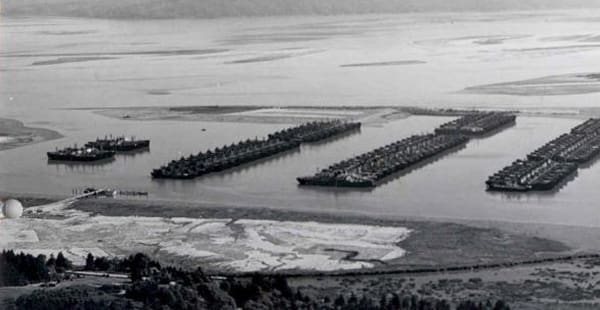Tongue Point Naval Shipyard Overview
Following the end of World War II, the shipyard’s primary purpose reverted to peacetime activities and long docks were added to accommodate major ships. As part of the Columbia River Group of the Pacific Reserve Fleet, mothballed, decommissioned ships were stored at Tongue Point.
In 1962, the naval base was deactivated and the land was subsequently divided among several interests, including certain agencies of the federal government, the Oregon Division of State Lands, and private commercial interests. Shortly afterward in 1964, the base became a Job Corps training site, housing more than 500 students at the location. The center continues to serve the Job Corps community and is the only center in the country to offer a United States Coast Guard-approved seamanship vocational trade in maritime transportation.
Today, the local fleet includes tugs, barges, and lifeboats, and continues to employ local workers.
During its long and varied history, the workers at Tongue Point Naval Shipyard former the core of the yard’s expansion and successive rebirths. The labor force was also exposed on a regular basis to asbestos, which was used extensively in the development and manufacture of marine components and parts until the mid-1970s when the federal government issues legislation making it illegal to include the material in these products.
Workers employed by the shipyard until that time, as well as those who subsequently worked on vessels containing asbestos, can develop serious, potentially fatal health complications as a result of exposure to the airborne asbestos fibers, which can be easily inhaled, lodging permanently in the body’s tissue to cause mesothelioma, lung cancer, asbestosis, and other serious conditions.
Men and women employed by the Tongue Point Naval Shipyard should discuss potential exposure issues with their health care provider as mesothelioma navy cases are most common. Although there is no cure, some steps can be taken to temporarily address symptoms of malignant mesothelioma.







